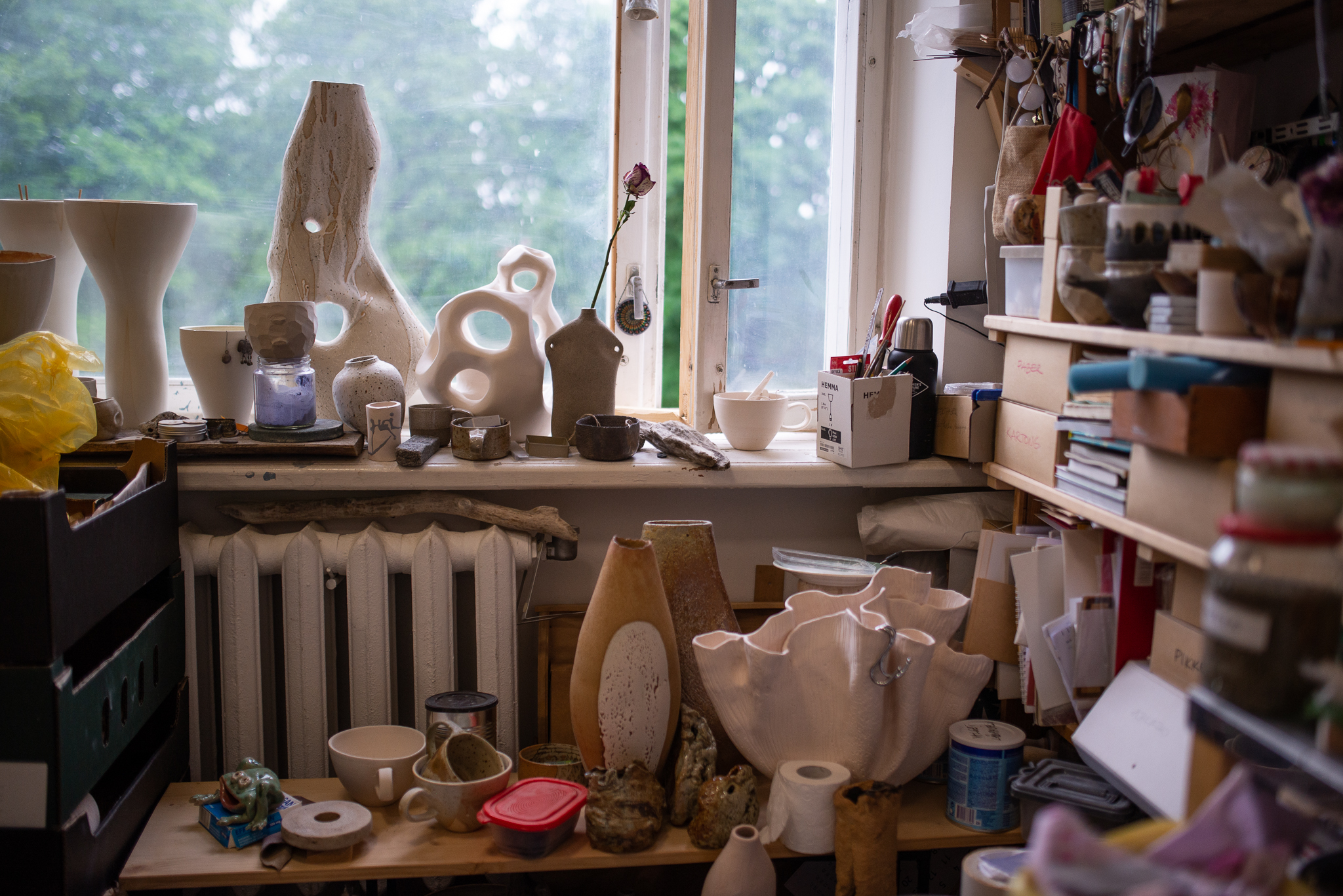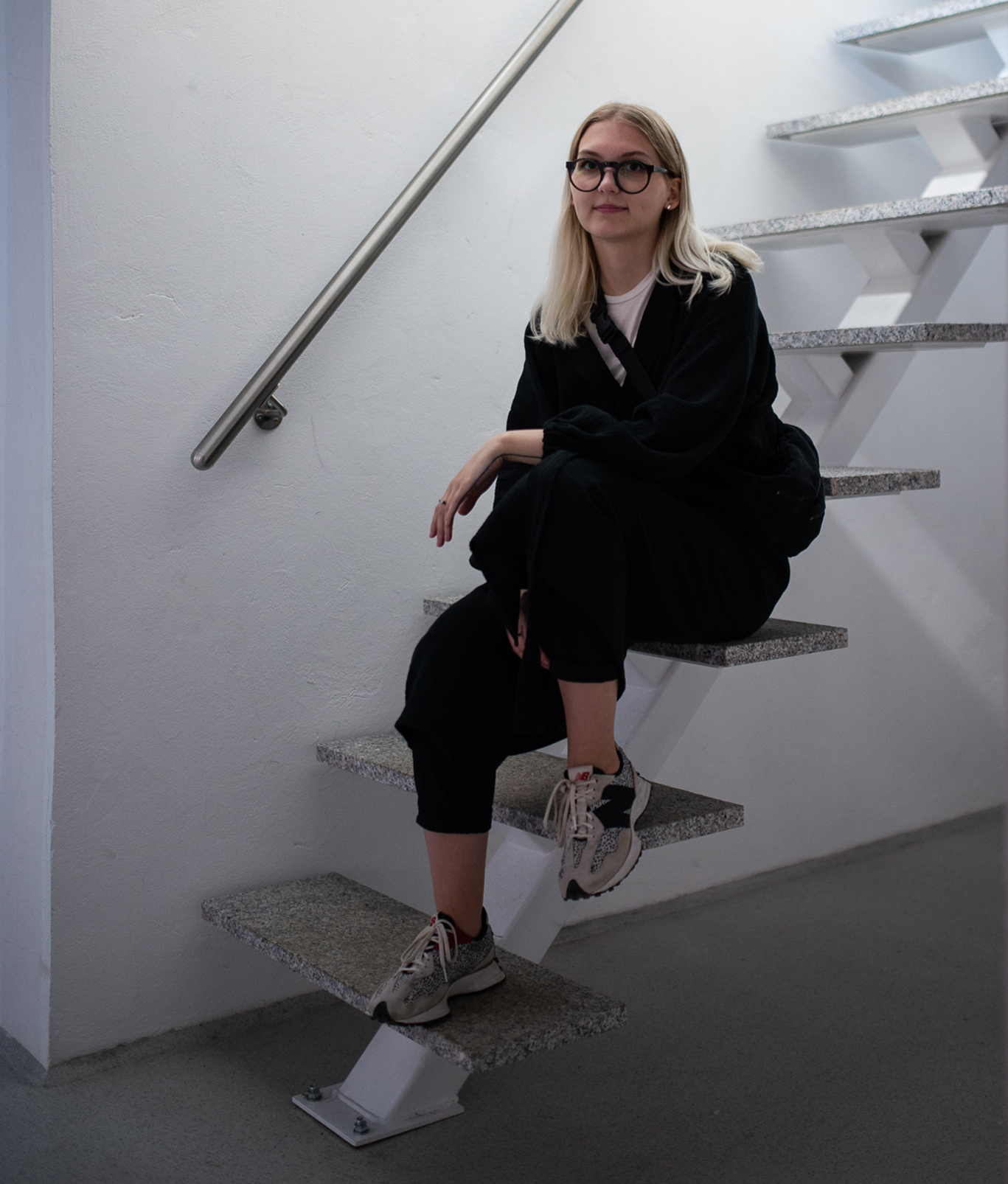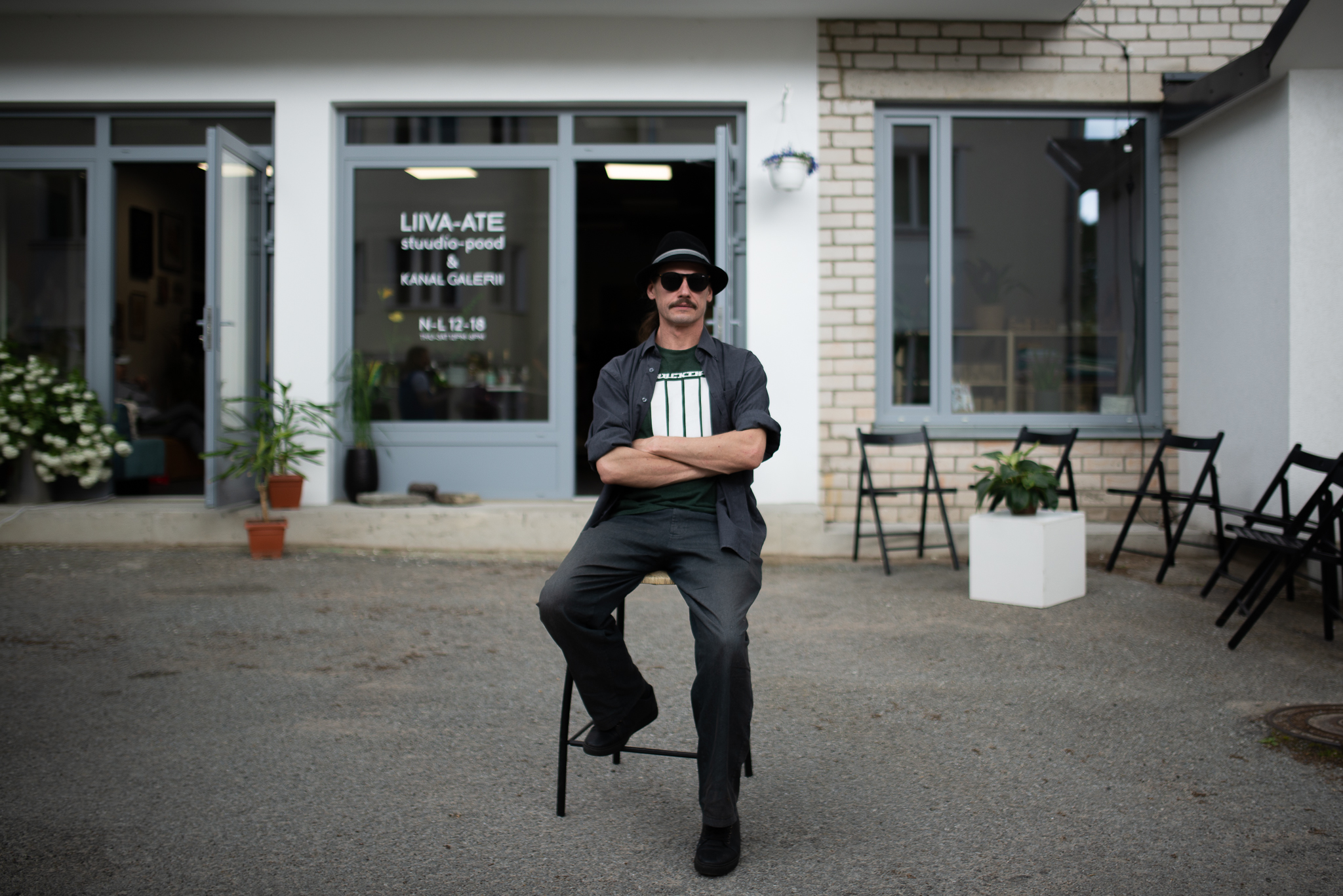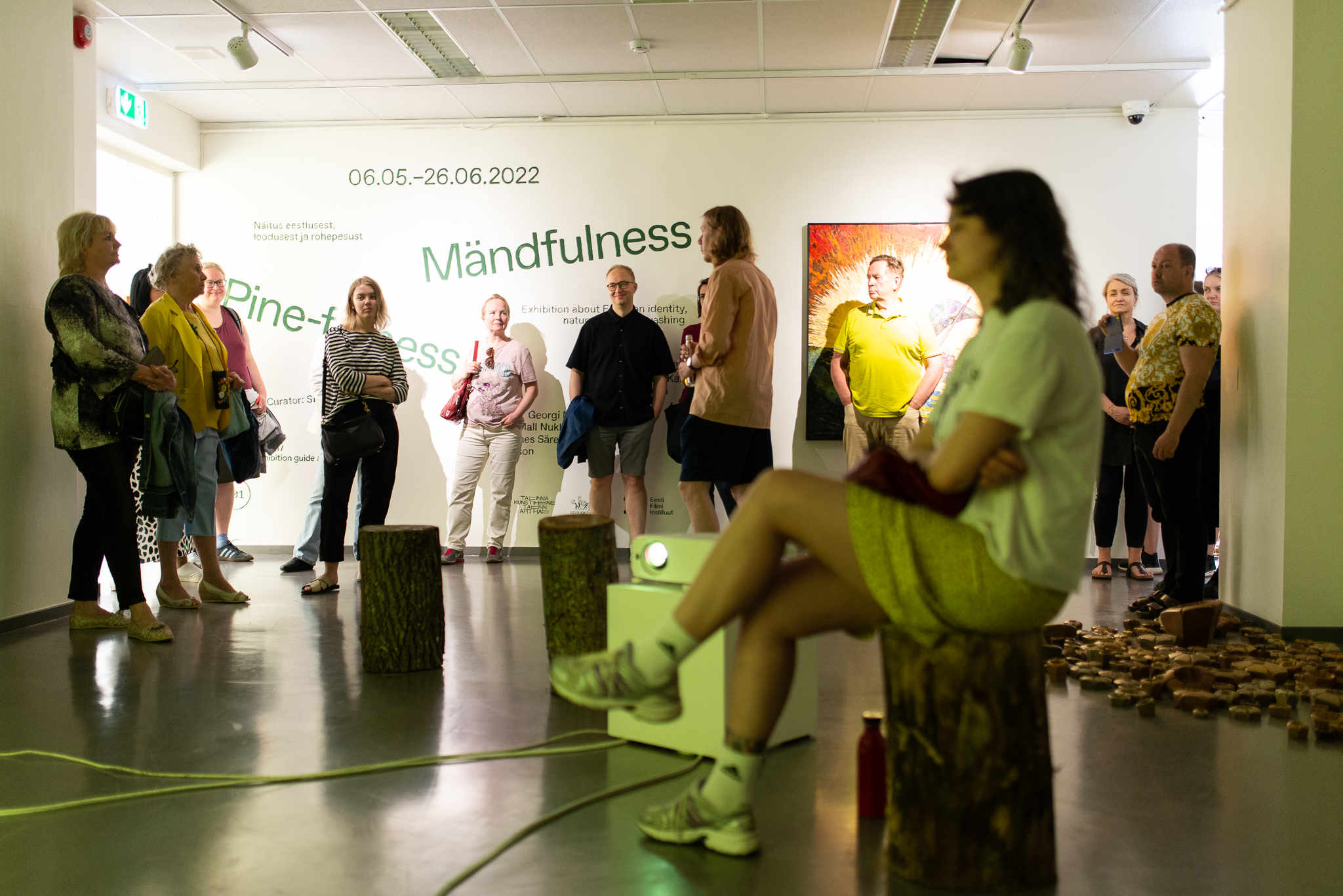Võru is a small, yet lively town in southern Estonia – with a bit more than 12,000 inhabitants, it accommodates several art venues and has recently started celebrating its own gallery nights. Stella Mõttus, a young art professional who runs two of the main gallery spaces in the town, tells me that all her summer weekends are already booked with different art events she is organising in Võru. Mõttus is one of the driving forces in the local art community: having started her studies in Tartu University and worked for Kogo gallery in Tartu, she came back to her home town to start working at the gallery space of the local museum.
Towards a new Võru
When travelling from the capital Tallinn, you have to first pass by the second biggest city in Estonia, Tartu, which is much like a border city between northern and southern Estonia. After passing Tartu, the landscape starts to change and you can really feel as if you have gone through a gate to the South: hilly landscape, vast fields, numerous magical lakes and dark woods replace the flat landscape of the northern part of Estonia. Võru is not far from the larger cities in the region. By bus, you can reach Võru from Tallinn in about four hours, if you are coming from Tartu, the town is only one-hour drive away. From the Latvian capital Riga, Võru is a three-hour drive away. The borders of Latvia (in the South) and Russia (in the East) are both only about 30 km from the town.

The new central hub for Võru’s art scene, the studio complex Liiva-ATE (ate is short for atelier) was established in 2019 on the initiative of the local artistic community. Now 13 creative minds work here, their mediums ranging from video editing and graphic design to ceramics and printmaking. The waiting-list is long as many new possible renters are queuing up to get a comfortable atelier in the building with a friendly vibe. The house itself is privately owned by local entrepreneur Roland Lust who has renovated the building and has many plans to develop the creative hub further. All the new renters must be approved by the existing tenants.


On the ground level of Liiva-ATE, a small shop, stocking products from people working in the building, was established last year. A staircase takes the visitor into the basement of the building where you can find a contemporary art space, Kanal gallery. Located in an old vehicle inspection pit, the name means channel in Estonian, and was the word used to describe the basements under a garage.
Stella Mõttus, who runs the gallery as a side project to her museum work at the Vana-Võromaa Kultuurikoda, says that the opening season of the space last year centred around well-known names in the Estonian scene who still had a connection to Võru. "It was a completely new space and I wanted to invite bigger names in order to see how it works out,” she tells me, "Peeter Laurits has been living in the nearby village of Kütiorg for a long time, Marge Monko has previously had exhibitions in Võru and so on. This year, as the place is already more established, I was thinking more about artists who could work with the space as a venue for installations and who could be interesting both for the local community but also the Estonian art scene in general. We are exhibiting many young artists this year, for example, Kertu Rannula will have her first solo show here in June. She is working with widely used Snapchat and Tiktok filters, looking into the trend of plastic surgeries that imitate these filters.” An open call for the end of the year programme will be announced in June.
Focused on artists
Although officially called a gallery, Kanal functions more as an artist-run-space than a commercial gallery. The funding for the space comes from the Estonian Cultural Endowment and the priority is to pay artist fees. "Some people ask how we can pay the fees for the artists but for us it is the primary goal, even if we have to cut other costs. Above all, the space is meant for artists but it is also created for the local community and so the artist must always either connect their exhibition to Võru or organise a public event. For example, this spring, Laura Kuusk organised an art day for local kids, which was extremely successful, we had more than 70 children come into the gallery in one day. It was a lot of fun!”

At the beginning of this year, the exhibition Universe of the Farmyard: Creators of Southern Estonia at Kumu Art Museum explored the south Estonian identity and its expressions in art from the beginning of the 20th century. "Historically the southern areas of Estonia had been part of Livonia for centuries. The borders of Estonian-speaking areas were joined into one administrative unit after the 1917 February Revolution. Even at the beginning of the 20th century, but more so in the 1920s and the 1930s, a unique Estonian identity started to form”, writes curator Liis Pählapuu in the catalogue. She continues: "The distinct spirituality contained in the identity of southern Estonia has been described in numerous literary and anthropological studies. Examinations of the nature of creative people from southern Estonia have repeatedly highlighted their romantic dispositions, cheerfulness, and propensity towards fantasy and sincerity compared to the seemingly more realistic sensibility of the people from the flat landscapes of northern Estonia.” And among different regions of the so-called southern states, "Võrumaa is usually considered the most distinct bearer of the spirit of southern Estonia, and the cornerstone of the identity of its inhabitants is the viability of its dialect, võro kiil.”

I also meet Toomas Kuusing, an artist who moved to Võru only a few years ago from Tallinn. He wanted to escape the skyrocketing prices of real estate, which make it impossible to afford an apartment there. During the last couple of years, his works have become somewhat a symbol of the southern Estonian mentality, the myths and black humour. He even illustrated the newest version of the national epic Kalevipoeg, which was published in the local Võro dialect. Although illustration work kept him occupied during Covid, he now feels the need to return to his own practice again. Kuusing started at Liiva-ATE but now owns a studio space in the same lovely wooden house he lives in. He is painting and making prints and currently preparing for a group show in Finland. He says: "Somehow now there are more people and places than a few years ago. I would even say that we wouldn’t need any more art venues here in this small town. But we could have more concerts and maybe also a residency space for artists, musicians and writers. This would be nice.”
Ecocritial perspective
The varied programme of the gallery space in the Vana-Võromaa Kultuurikoda museum features contemporary art shows but also design and applied arts exhibitions. When I was visiting in May, the exhibition Pinefulness (curator Siim Preiman), originally produced for Tallinn Art Hall, was on show. "I am thinking a lot about having more exhibition exchanges with other institutions,” Mõttus tells me, "It makes sense to show things that have been previously exhibited in Tallinn, as not everyone is able to travel.” Pinefulness focuses on the Estonian relationship to the forest from an ecocritical perspective. Cutting down the forests has been an immense issue in Estonia for several years and as many in the region are employed in the wood industry, the show really got to people. The curator stayed in Võru during the installation period and after the opening gave tours and spoke with the locals about the issue which touched many people’s hearts.


In the very centre of Võru, we find the beautiful lake Tamula with a beach popular among the locals as well as tourists, enjoying walks on the promenade, the views from the benches or hanging out at the bungalow bar in summer. This is the place where the artist and designer Sigrid Liira has mounted a small displaycase-gallery, called Võru Showcase. Initially from Võru, she was studying in Tallinn but came back there with her partner Silver Marge.
The showcase gallery has a long history: originating from Prague, it was given to the Estonian-French artist Camille Laurelli who tried it out in Grenoble and later in Tallinn where it was used by different artists. Now Laurelli left it to Liira and Marge to start a new life in Võru. "The location was chosen based on the fact that so many people pass this place or hang out here in the summer,” Sigrid tells, "It has been very cool to see how people stop and scratch their head sometimes. The idea has been to bring unexpected things here and maybe to shake things up a bit. Last year, we had a conceptual exhibition by Triin Tamm, the showcase was filled with sand and people were discussing what it could mean, if this can be considered art and so on. I like when art starts discussions.” Sigrid hopes to open up the Showcase for local art school students as well. "But I would also be happy to host international artists. As the transport and production are both so cheap for such a small space, it would be a really nice way to introduce international artists in Võru.”